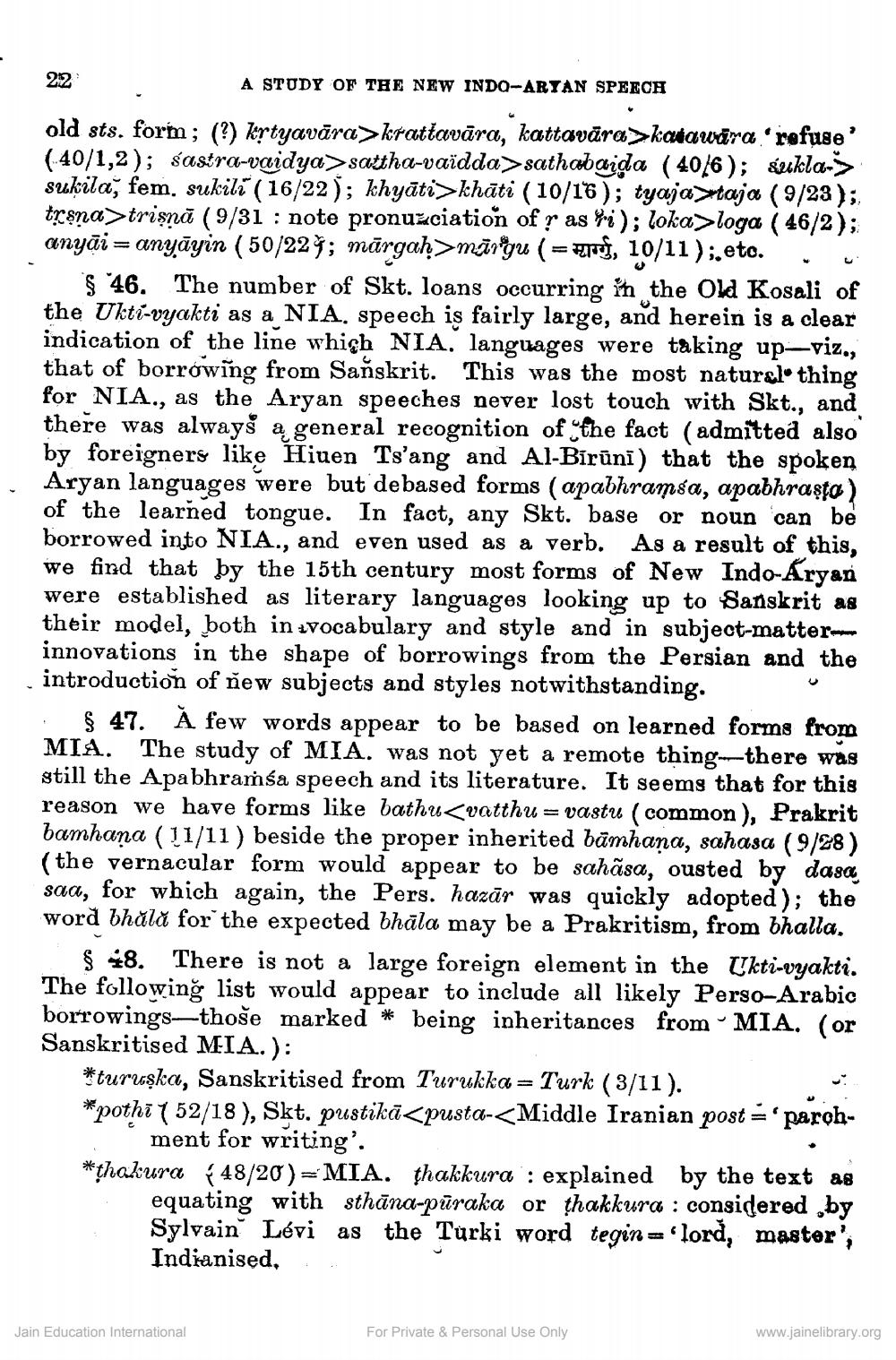________________
22
A STUDY OF THE NEW INDO-ARTAN SPEECH
old sts. form; (?) krtyavāra>krattavāra, kattavāra >kotawara 'refuse' (40/1,2); sastra-vaidya>sattha-vaïdda>sathabaida (40/6); sukla-> sužila, fem. sukilī (16/22); khyāti>khāti ( 10/16 ); tyajataja (9/23 ); trsna>trimnă (9/31 : note pronuzciation of r as 4i); loka>loga ( 46/2); anyāi = anyāyin (50/224; mārgah>märgu ( = 7), 10/11 );.eto.
§ 46. The number of Skt. loans occurring in the Old Kosali of the Ukti-vyakti as a NIA, speech is fairly large, and herein is a clear indication of the line whigh NIA. languages were taking up-viz., that of borrowing from Sanskrit. This was the most natural thing for NIA., as the Aryan speeches never lost touch with Skt., and there was always a general recognition of the fact (admitted also by foreigners like Hiuen Ts’ang and Al-Bírūni) that the spoken Aryan languages were but de based forms ( apabhramsa, apabhraşta ) of the learned tongue. In fact, any Skt. base or noun can be borrowed into NIA., and even used as a verb. As a result of this, we find that by the 15th century most forms of New Indo-Aryan were established as literary languages looking up to Sanskrit as their model, both in tvocabulary and style and in subject-matter innovations in the shape of borrowings from the Persian and the introduction of new subjects and styles notwithstanding. " · § 47. A few words appear to be based on learned forms from MIA. The study of MIA. was not yet a remote thing there was still the Apabhramsa speech and its literature. It seems that for this reason we have forms like bathu<vatthu = vastu (common), Prakrit bamhana ( 11/11 ) beside the proper inherited bāmhana, sahasa (9/28) (the vernacular form would appear to be sahāsa, ousted by dasa saa, for which again, the Pers. hazār was quickly adopted); the word bhală for the expected bhāla may be a Prakritism, from bhalla.
§ 18. There is not a large foreign element in the Ukti-vyakti. The following list would appear to include all likely Perso-Arabic borrowings—thoše marked * being inheritances from MIA. (or Sanskritised MIA.):
*turuska, Sanskritised from Turukka = Turk (3/11). *pothi 52/18), Skt. pustikā<pusta-<Middle Iranian post = 'parch
ment for writing'. *thakura 448/20 )=MIA. thakkura : explained by the text as
equating with sthāna-pūraka or thakkura : considered by Sylvain Lévi as the Turki word tegin='lord, master', Indianised,
Jain Education International
For Private & Personal Use Only
www.jainelibrary.org




